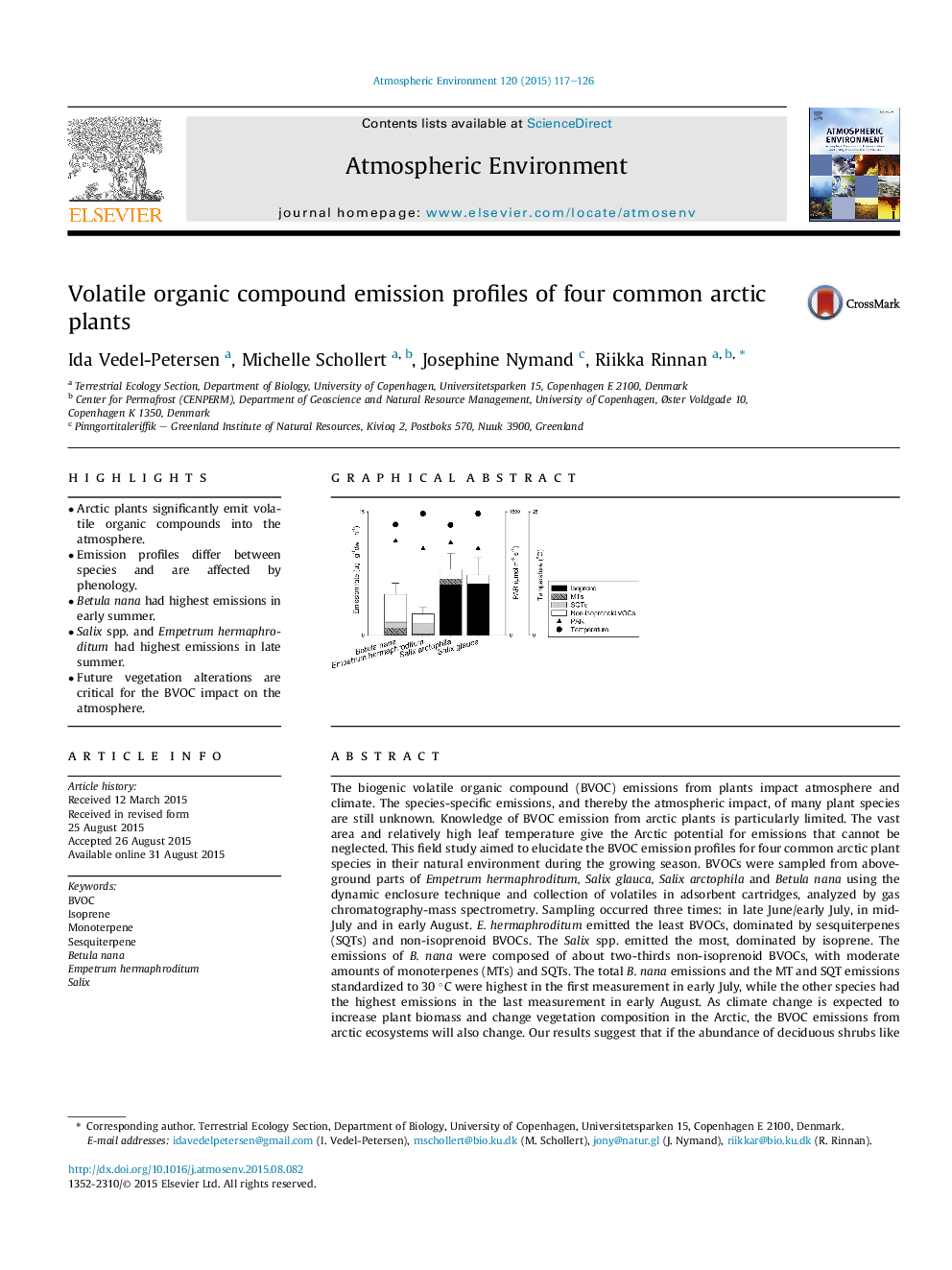| کد مقاله | کد نشریه | سال انتشار | مقاله انگلیسی | نسخه تمام متن |
|---|---|---|---|---|
| 6337307 | 1620351 | 2015 | 10 صفحه PDF | دانلود رایگان |
- Arctic plants significantly emit volatile organic compounds into the atmosphere.
- Emission profiles differ between species and are affected by phenology.
- Betula nana had highest emissions in early summer.
- Salix spp. and Empetrum hermaphroditum had highest emissions in late summer.
- Future vegetation alterations are critical for the BVOC impact on the atmosphere.
The biogenic volatile organic compound (BVOC) emissions from plants impact atmosphere and climate. The species-specific emissions, and thereby the atmospheric impact, of many plant species are still unknown. Knowledge of BVOC emission from arctic plants is particularly limited. The vast area and relatively high leaf temperature give the Arctic potential for emissions that cannot be neglected. This field study aimed to elucidate the BVOC emission profiles for four common arctic plant species in their natural environment during the growing season. BVOCs were sampled from aboveground parts of Empetrum hermaphroditum, Salix glauca, Salix arctophila and Betula nana using the dynamic enclosure technique and collection of volatiles in adsorbent cartridges, analyzed by gas chromatography-mass spectrometry. Sampling occurred three times: in late June/early July, in mid-July and in early August. E. hermaphroditum emitted the least BVOCs, dominated by sesquiterpenes (SQTs) and non-isoprenoid BVOCs. The Salix spp. emitted the most, dominated by isoprene. The emissions of B. nana were composed of about two-thirds non-isoprenoid BVOCs, with moderate amounts of monoterpenes (MTs) and SQTs. The total B. nana emissions and the MT and SQT emissions standardized to 30 °C were highest in the first measurement in early July, while the other species had the highest emissions in the last measurement in early August. As climate change is expected to increase plant biomass and change vegetation composition in the Arctic, the BVOC emissions from arctic ecosystems will also change. Our results suggest that if the abundance of deciduous shrubs like Betula and Salix spp. increases at the expense of slower growing evergreens like E. hermaphroditum, there is the potential for increased emissions of isoprene, MTs and non-isoprenoid BVOCs in the Arctic.
124
Journal: Atmospheric Environment - Volume 120, November 2015, Pages 117-126
